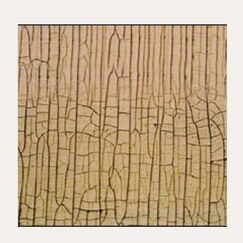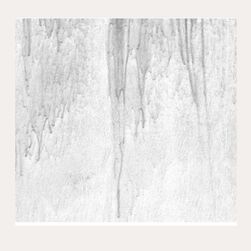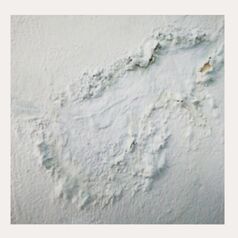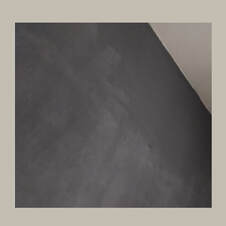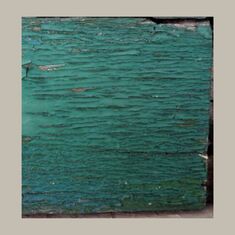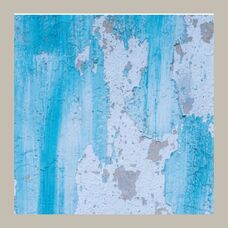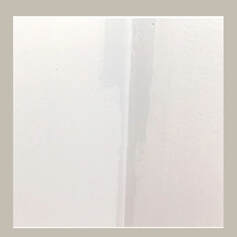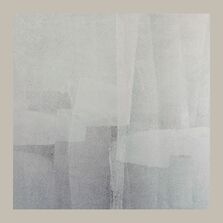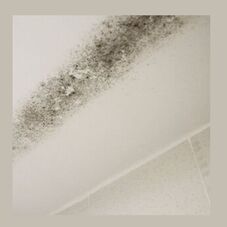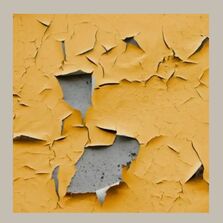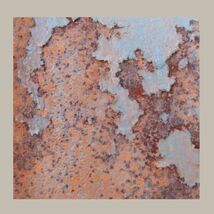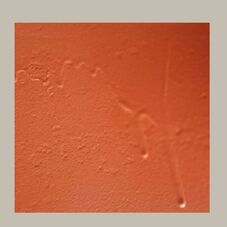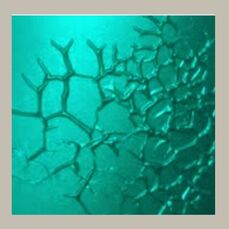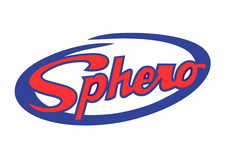Understanding the basic reasons of paint failures will assist you in preventing future paint problems. Moisture, inadequate surface preparation, incorrect paint application, the sun, and weathering are the leading reasons of paint failure. You should be aware that the most common paint failures are listed below in alphabetical order, along with recommendations for prevention.
- Alligatoring, which is often seen on wood surfaces, is chipped paint that resembles alligator skin.
- Alligatoring can occur as a result of weather aging, applying too many layers of paint, stretching and shrinking of the final coat more than the underlying coatings, paint not adhering to a glossy surface, or applying a second coat of paint over an imperfectly dried first coat.
- In order to keep the finish consistent and even after alligatoring, paint needs to be completely removed.
- High-quality alkyd primer should be used to prime wood surfaces, and acrylic latex should be used to finish them.
- Alligatoring can occur as a result of weather aging, applying too many layers of paint, stretching and shrinking of the final coat more than the underlying coatings, paint not adhering to a glossy surface, or applying a second coat of paint over an imperfectly dried first coat.
- In order to keep the finish consistent and even after alligatoring, paint needs to be completely removed.
- High-quality alkyd primer should be used to prime wood surfaces, and acrylic latex should be used to finish them.
- Bleeding paint is an unsightly surface discoloration that is frequently seen on ceilings, hardboard siding, outdoor wood surfaces, repainted wallpaper, and surfaces where light-colored paint has been painted over dark-colored paint.
- The moisture and water-soluble pigments that wax causes to be present in the wood are the reasons of bleeding.
- Before beginning any surface preparation, it is imperative to remove any sources of excess water.
- High-quality acrylic latex paints should be used to finish exterior wood surfaces after primed with premium aklyd-based primers.
- High-quality stain-blocking primer based on alkyd or acrylic latex should be used to prime interior surfaces. High-quality acrylic latex finish paint should be used to finish them..
- New paint blisters when it comes into contact with moisture and direct sunshine.
- New paint may dry too quickly on warm surfaces, which can cause blistering.
- Due to their ability to absorb heat in addition to surfaces, dark or dramatic colors tend to trigger this more frequently.
If the surface is being repainted, heat blistering will have a layer of paint underneath the blister.
- Blisters can also result from trapped moisture trying to escape through painted surfaces in walls or behind surfaces.
- When a blister becomes moist, the underlying surface becomes visible.
Surfaces that have been blasted should be thoroughly scraped and sanded, primed with an excellent alkyd or acrylic latex primer, and finished with an excellent acrylic latex finish paint.
- Spot priming bare areas will be required if moisture blistering appears on a repainted surface in order to guarantee a consistent and even finish prior to finishing the final priming and painting.
- Paint naturally weathers away to leave behind chalking, the worn powder visible on external painted surfaces. On the other hand, thin paint or insufficient priming might result in early chalking.
- Homeowners should be advised that during rainy weather, chalking on siding above masonry will run and stain the brickwork.
- For the purpose of preventing further excessive chalking, it is strongly advised to apply one coat of premium acrylic latex finish paint and one coat of premium alkyd primer after a chalked surface has been pressure washed and made ready for painting.
- Homeowners should be advised that during rainy weather, chalking on siding above masonry will run and stain the brickwork.
- For the purpose of preventing further excessive chalking, it is strongly advised to apply one coat of premium acrylic latex finish paint and one coat of premium alkyd primer after a chalked surface has been pressure washed and made ready for painting.
- Checking is an introduction to cracking that happens when paint starts to lose its elasticity and creates tiny cracks on the painted surface. Later, these fractures enlarge and turn into cracks.
- Multiple coats of paint or plywood on wood surfaces can cause checking and cracking.
It is best to completely remove any checked or cracked paint from surfaces before applying a new coat.
- Top grade acrylic latex finish paint should be applied after properly prepared wood surfaces have been painted with an alkyd primer.
- Moisture that penetrates the surface of masonry and plaster generates efflorescense, a white, salty material. If neglected for an extended length of time, it will solidify and turn crusty.
- Prior to priming and painting, any source of excessive moisture must be removed, the surface must be cleaned using wire brushing or scraping, and surfaces must be repaired as needed.
- Premium alkaline-resistant acrylic latex priming paints or akyld paints can be used to paint surfaces.
- The sun is one thing that makes paint fade. Paint degradation is the term for the process by which the sun's UV radiation break down the chemical bonds in paint, including the pigment.
- However, the sun isn't the only thing that can degrade paint's color. Your paint will also fade due to temperature, ozone, oxygen, and electric light.
- There is also the matter of paint quality; lower quality paints will fade more rapidly due to inferior ingredient quality.
- Hatbanding is a result of excessively long roller naps and overcutting interior walls, ceilings, and trim corners.
- Hatbanding happens when dry paint is covered with wet paint.
- Hatbanding stands out thanks to the dramatic and dark inside colors and sheens.
- Hatbanding can be reduced by applying a light coat of paint or using tiny nap rollers.
- The improper application of coatings is the cause of lap marks. The majority of the time, they are visible outside.
- When brush painting siding, a homeowner or contractor must apply the paint continuously, horizontally, from one end to the other.
- If the paint dries too quickly or the homeowner or contractor stops in the middle, there will be a lap mark where the paint overlaps when the surface is painted over. This is one of the main arguments against applying coatings in the direct sun.
- In warm months, coatings should be applied in shady places; in the cooler months, homeowners and contractors should remain out of the sun.
- You may let the sun come around and dry the freshly painted area by staying ahead of it.
- Mildew is a fungus that thrives in warm, humid climates. It is frequently seen in shady regions, though it is not restricted to them.
- Due to the nutrients that paints supply, mildew can develop in a variety of colors and likes painted surfaces.
These same nutrients become food when they land on painted surfaces after floating through the air.
- Products based on linseed oil that don't contain mildewcide promote mildew, which grows more quickly on flat surfaces than on glossy ones.
- The majority of stains and paints without one.
- A 3 to 1 water to bleach ratio works well to remove mildew.
- In severe situations of neglect, a far more robust solution might be required.
- A high-quality primer and acrylic latex finish paint are essential for preventing mildew, as is thorough surface preparation and cleaning.
- The most mildew-resistant paints are acrylic latex finishes. Professional painters and surface prep artists are a homeowner's greatest ally when it comes to stopping mildew from growing.
- Due to the nutrients that paints supply, mildew can develop in a variety of colors and likes painted surfaces.
These same nutrients become food when they land on painted surfaces after floating through the air.
- Products based on linseed oil that don't contain mildewcide promote mildew, which grows more quickly on flat surfaces than on glossy ones.
- The majority of stains and paints without one.
- A 3 to 1 water to bleach ratio works well to remove mildew.
- In severe situations of neglect, a far more robust solution might be required.
- A high-quality primer and acrylic latex finish paint are essential for preventing mildew, as is thorough surface preparation and cleaning.
- The most mildew-resistant paints are acrylic latex finishes. Professional painters and surface prep artists are a homeowner's greatest ally when it comes to stopping mildew from growing.
- Peeling occurs on a range of surfaces and is associated with inadequate surface preparation and dampness.
- By being aware of the various surfaces and how they respond to coatings and moisture, you may significantly lower the likelihood of this typical paint issue.
- Iron oxide, or rust, is a material that is usually reddish or brown in color.
- Rust develops under a variety of conditions, typically as a result of an oxidation process between iron and oxygen, which is catalyzed by moisture or water.
- The fact that rust is heterogeneous means that asset owners need to be aware that there are several kinds of rust.
- Paint sagging can happen when paint is applied on unclean surfaces, excessively thinned paint, overpainted surfaces, or shiny surfaces.
- It manifests itself on the surface as paint run-off, which is typically the result of using too much product.
- When paint is put to a vertical surface, the surplus paint tends to drip downhill due to gravity, causing paint to sag or run.
- One way to get rid of sags and runs is to properly apply paint and prepare the surface.
- Make sure you constantly apply paint according to the technical data sheet's requirements to avoid this. Furthermore, it's best to avoid applying the paint too near the surface.
- It could be caused by any of the following: extremely thick paint layer (usually seen with oil- or alkyd-based paints)
Painting in very hot or cold, damp weather speeds up the paint film's drying process on top rather than underneath. putting newly painted surfaces in high relative humidity.
- When a thick coat of paint is not scraped off with a brush, the underneath remains wet while the top layer dries, causing wrinkles.
- Avoid covering surfaces with a single thick layer when two thick coatings are required.
Painting in very hot or cold, damp weather speeds up the paint film's drying process on top rather than underneath. putting newly painted surfaces in high relative humidity.
- When a thick coat of paint is not scraped off with a brush, the underneath remains wet while the top layer dries, causing wrinkles.
- Avoid covering surfaces with a single thick layer when two thick coatings are required.

